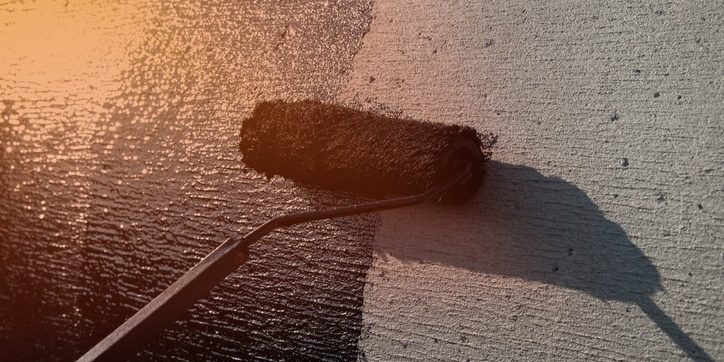Flat roof coatings are available in a variety of types these days. Homeowners no longer need to use tar with toxic fumes to seal their flat roofs. Rubber and PVC coatings are newer products you can use to seal your roof from the elements. The type of coating you choose for your roof should depend on your roof’s existing condition and the kind of coating already on your roof. Here are some of the best coatings for flat roofs today.
Acrylic Coatings
Acrylic coatings use water-based materials and don’t have any complex components in the mixing process. This simplicity creates better safety since acrylic is not a flammable material. Acrylic coatings are generally highly reflective and work well with bituminous and non-bituminous roofs.
The acrylic coating will need to be applied when there isn’t any extreme cold or heat. If you apply acrylic in intense heat, it won’t properly stick, and it may freeze under overly cold temperatures. If there is ponding water on your flat roof, it may also affect adhesion.
Silicone Coating
Many homeowners now prefer using silicone coating for their flat roofs because of its appealing aesthetics and solid protection from leaks. It’s one of the best coatings to permanently withstand ponding water. Silicone coatings won’t chip away over time. Since it is quite sustainable, you don’t have to worry about replacing the coating until a decade or more. Silicone also holds up well in climates with extreme temperature fluctuations.
One notable downside is it has little resistance to abrasion, so it’s not a good option if your roof has considerable foot traffic. It’s also slippery under wet conditions.
Urethane Roof Coatings
Urethane roof coatings are a fluid-applied roofing system. They are most commonly used in sprayed-in-place polyurethane foam insulation and other commercial roofing substrates. There is no doubt urethanes are among the strongest, most durable coatings on the market today. Moreover, you can choose between aliphatic and aromatic urethane coatings.
Aliphatic urethane coatings are extremely UV stable, dirt-resistant, and hold color longer, making them perfect for a topcoat. Aromatic coatings, on the other hand, are less expensive and don’t hold up well against UV rays, which is why they are often used as a base coat.







